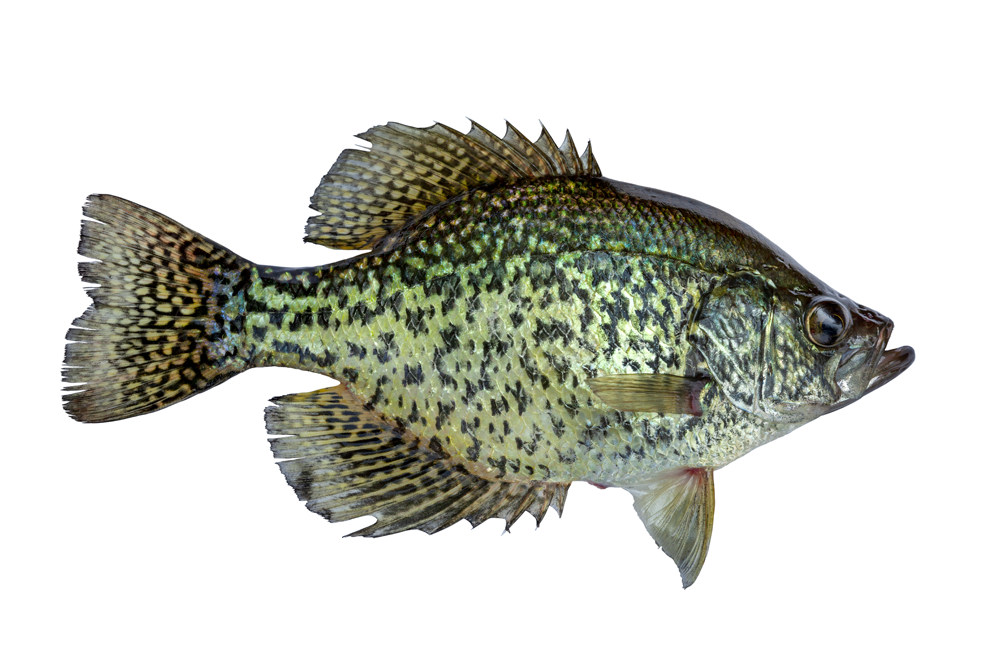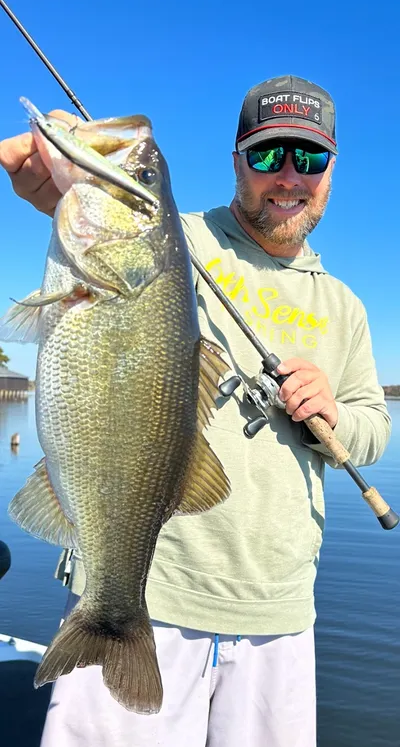Fish Behavior During the Cold Winter Months A Guide to Fishing Lake Fork in the Winter
Hey there, folks! Cap’n Ron here, your go-to guide for fishing on Lake Fork. With 30 years of experience in the game, I’ve learned a lot about how fish behave during different seasons, and today, I want to share some key insights with you about fishing during the colder winter months. If you’ve fished Lake Fork during the winter, you know that it can be both challenging and rewarding. The fish behave quite differently when the temperatures drop, but with the right knowledge, you can use that to your advantage and reel in some fantastic catches.

Understanding Fish Behavior in Cold Water
When the water cools down, fish slow down, and their metabolism drops. In the warmer months, bass and crappie are active, constantly chasing baitfish and moving around in search of food. However, once the water temperature falls below about 50°F (10°C), their behavior changes dramatically. They become less active, their feeding windows shorten, and they tend to stay in deeper, more stable parts of the lake.
Bass, especially the big ones, don’t have to eat as frequently in cold water, and they’ll usually position themselves in areas that offer the best chance for conserving energy. Crappie, on the other hand, might move closer to cover and suspend near underwater structures, making them a bit harder to find but not impossible to catch.
Let me break down how these changes in behavior influence how you should approach fishing during the winter months.
Key Factors to Consider in Winter Fishing
1. Water Temperature
As I mentioned earlier, bass and crappie are highly sensitive to temperature changes. Once the water temperature drops below 50°F, their metabolism slows down, and their need to feed diminishes. They don’t require as much food as they do in warmer months. However, that doesn’t mean they won’t eat—just that you need to make your presentation slow and deliberate.
During the winter months, you’ll notice fish congregating in deeper areas. Bass often take refuge around submerged structures like brush piles, rocky points, or creek channels. Crappie will often suspend near structures such as fallen trees, brush piles, and submerged stumps, as these spots offer both shelter and food sources, such as smaller baitfish.
2. Fish Location
Fish will typically seek the warmest water they can find. In the winter, this means they’ll often be found in deeper water, where the temperature stays more stable. Bass especially are notorious for holding close to the bottom in the cooler months.
For bass, look for underwater points, humps, and creek channels. These areas tend to concentrate bass in the winter because they offer easier access to deeper water and give them a vantage point over their prey. Bass will stay near these areas to conserve energy but will move slightly shallower on warmer days to feed.
Crappie, on the other hand, are often found near submerged timber or brush piles. They’ll typically suspend in these areas, so you’ll need to fish above the bottom and in the middle of the water column.
3. Fishing Times
While fish can be harder to find in the winter, they will still feed, but typically during the warmest parts of the day. The most active feeding times are generally between mid-morning and mid-afternoon when the water temperature is at its highest for the day. It’s during these windows that you’ll have the best chance of catching fish, as they’re more likely to be more active during these hours. Fishing first light and right before dusk can sometimes yield a surprise catch, but the bite won’t be as strong as it would be in the warmer parts of the day.
Tips and Techniques for Winter Bass and Crappie Fishing on Lake Fork
Now that we’ve covered the basics of how fish behave in cold water, let’s dive into some specific tips and techniques that will help you put more fish in the boat this winter at Lake Fork.
1. Look for Deeper, More Stable Water
Bass tend to congregate in deeper, more stable parts of the lake. Find areas where there’s deep water close to shallow flats or cover, as this is where bass are likely to hang out. These spots act as resting zones for the fish during the winter. They may not be as aggressive as in warmer months, but they’ll still bite if you present your bait correctly.
2. Focus on Creek Channels and Drop-Offs
During the winter, I love fishing creek channels, especially those with a steep drop-off. The bass will stage at the top of the drop, waiting for prey to come by, and they’ll move down into deeper water if the temperature becomes too cold. You can also find crappie suspending near these structures, so if you’re targeting crappie, fish around these areas with a light jig or live bait to get them to bite.
3. Try Slow, Deliberate Presentations
Winter fishing is all about patience and subtlety. Slow down your retrieve, and avoid jerky movements that can spook the fish. A slow, steady retrieve with your spinnerbait or crankbait can tempt a sluggish bass, while crappie may prefer a slow jigging action that mimics dying baitfish. Don’t be afraid to let your bait fall to the bottom and sit for a while. Sometimes, a slow presentation with minimal movement is exactly what the fish are looking for.
4. Watch the Weather
While the weather may be chilly, keep an eye on any warm fronts that move through the area. A sudden rise in temperature will get bass and crappie more active, and you may see more feeding during the day. Cold fronts can make fishing tougher, but knowing when the weather is warming up can give you an advantage.
5. Use Electronics to Your Advantage
In the winter, fish aren’t always as spread out as they are during the warmer months. Using a fishfinder or sonar system is a great way to pinpoint where fish are holding, especially in deeper areas. Look for fish on the bottom or suspended near structures like submerged trees or brush piles.
6. Be Prepared for Longer Days
Winter fishing on Lake Fork often means spending more time searching for the right spots. The bites can be few and far between, but with persistence, you’ll find success. A solid understanding of the lake and fish patterns will give you the edge in locating those prime winter fishing zones.

Why Hire a Guide for Winter Fishing?
With over 30 years of fishing experience and being a professional guide since 2000, I’ve seen the ins and outs of fishing on Lake Fork through all seasons, especially winter. Fishing in colder months requires specific techniques, knowledge of fish behavior, and a bit of luck. If you’re new to fishing Lake Fork or just want to take your experience to the next level, hiring a guide can make all the difference.
As your guide, I’ll take you to the best spots, provide the right gear and baits, and teach you techniques that will help you land more fish. Winter fishing doesn’t have to be intimidating or frustrating—it can be incredibly rewarding if you know how to read the water and adapt to the fish’s behavior.
Whether you’re targeting large-mouth bass or crappie, I’ve got the knowledge and expertise to ensure you make the most of your time on the water. After all, a successful fishing trip is about more than just the catch—it’s about enjoying the process and learning something new along the way.
Well, there you have it! Winter fishing can be tough, but with a little patience and the right knowledge, it’s possible to have a productive day on Lake Fork. If you’re ready to take the plunge and tackle the lake’s colder waters, don’t hesitate to give me a call. I’ll help you land the fish of your dreams!
See you on the water! — Cap’n Ron
Your Professional Guide at Lake Fork
Lake Fork Guide Sponsors





